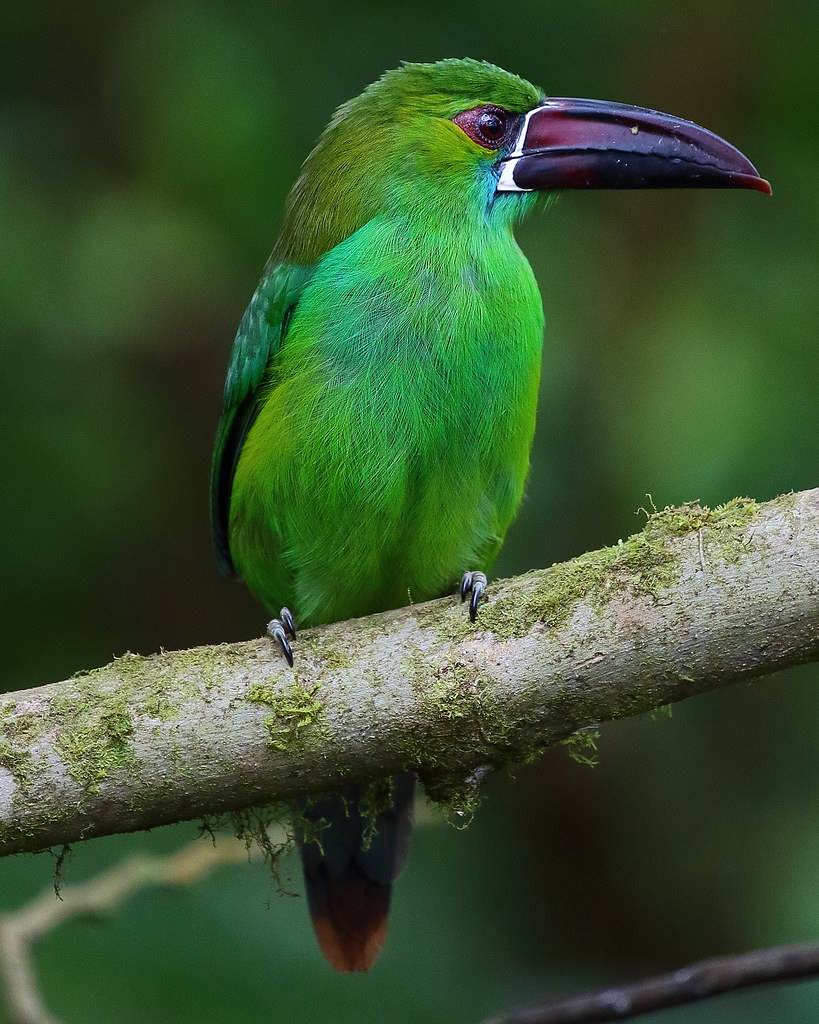

Often seen in pairs moving through the canopy, these emerald-green birds wearing a perfectly placed bright red patch.
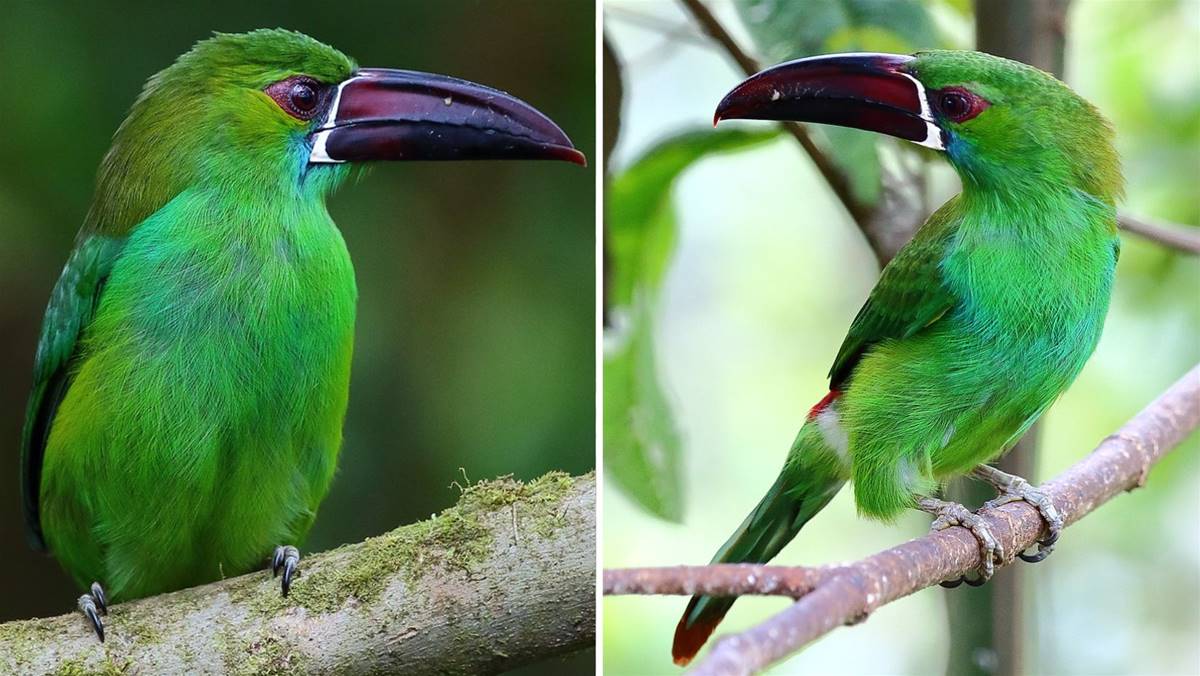
MEET THE CRIMSON-RUMPED TOUCANET
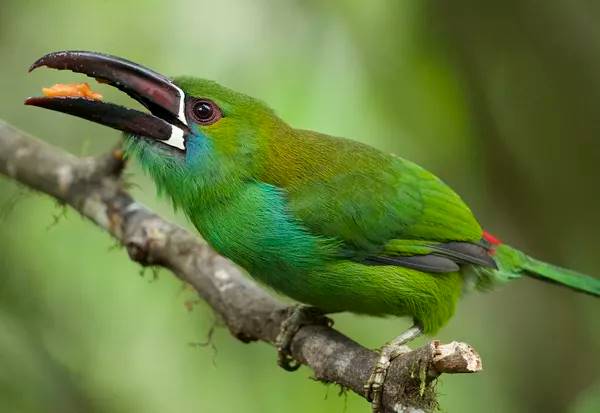
Photo Courtesy of Lip Kee / CC BY-SA 2.0The crimson-rumped toucanet (Aulacorhynchus haematopygus) is an imposing-looking bird, measuring between 41 and 48 cm in length, measuring 230 grams. Their plumage is mostly green except for the nape of the neck and the back of the neck which is reddish fading to green including the wings.
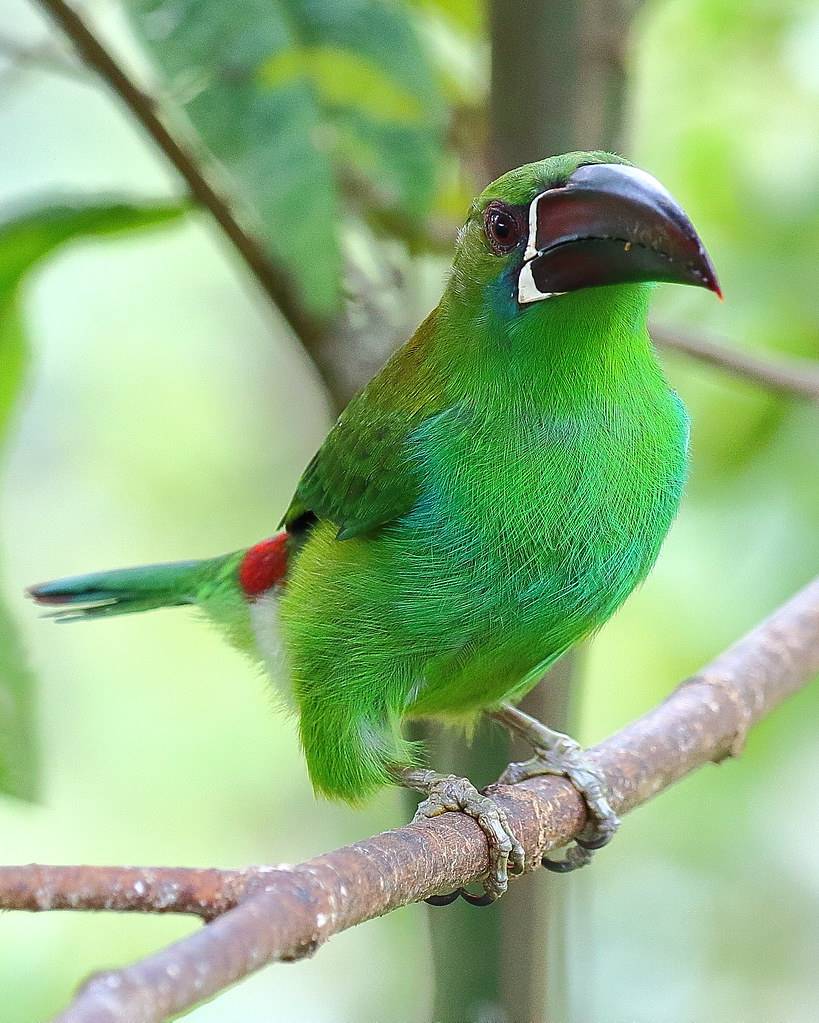
Photo Courtesy of ryanacandee / CC BY 2.0The only way to tell males and females apart is that the female is smaller than the male.
Juvenile birds are generally duller than their male counterparts with a more orange rump.
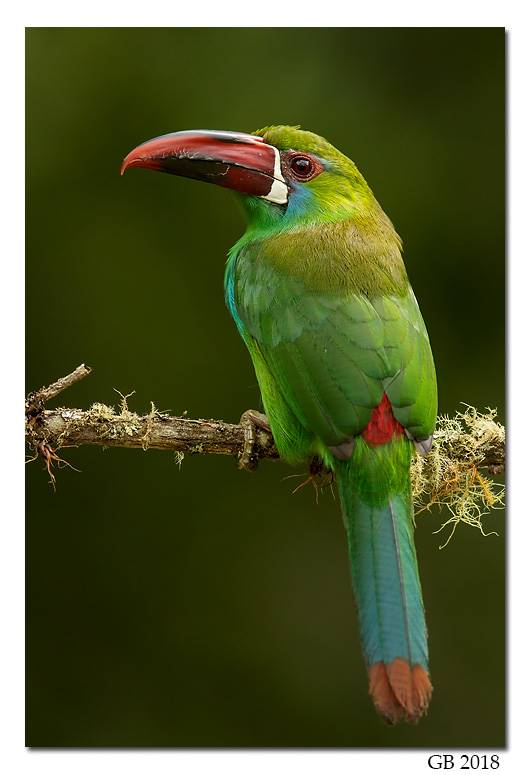
These birds can be found in the humid Andean forests of Ecuador, Colombia, and Venezuela.
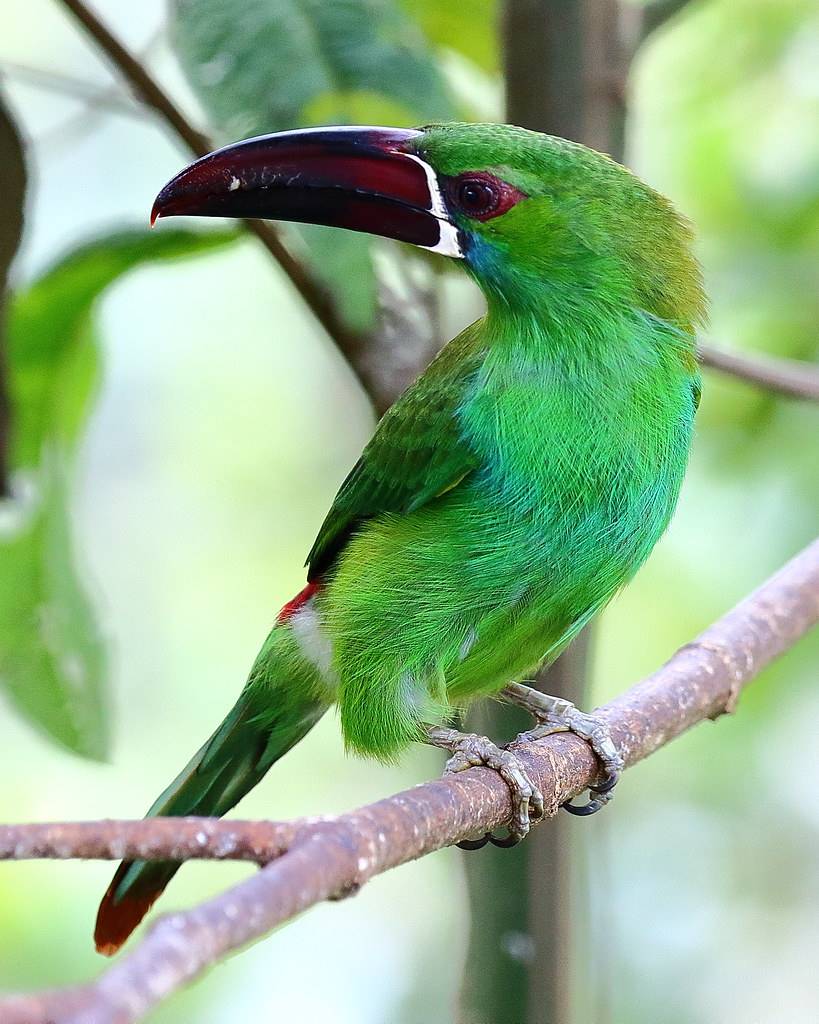
Photo Courtesy of ryanacandee / CC BY 2.0These birds like to inhabit humid tropical forested areas from the foothills to the highlands, more often than not in the canopy.
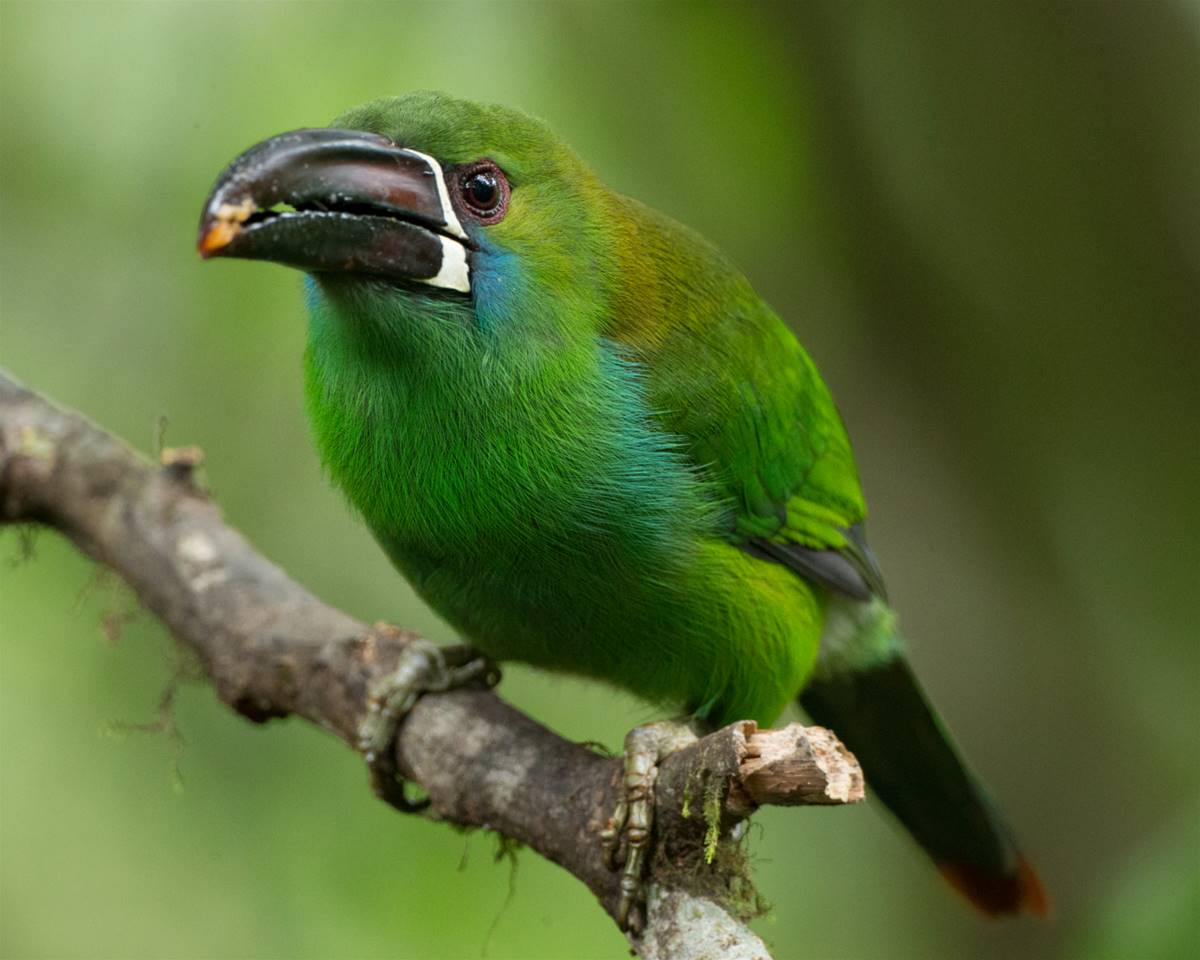
Photo Courtesy of Lip Kee / CC BY-SA 2.0Being omnivorous, Crimson-rumped toucanets dine on fruit, small insects, small birds, and eggs of other species.
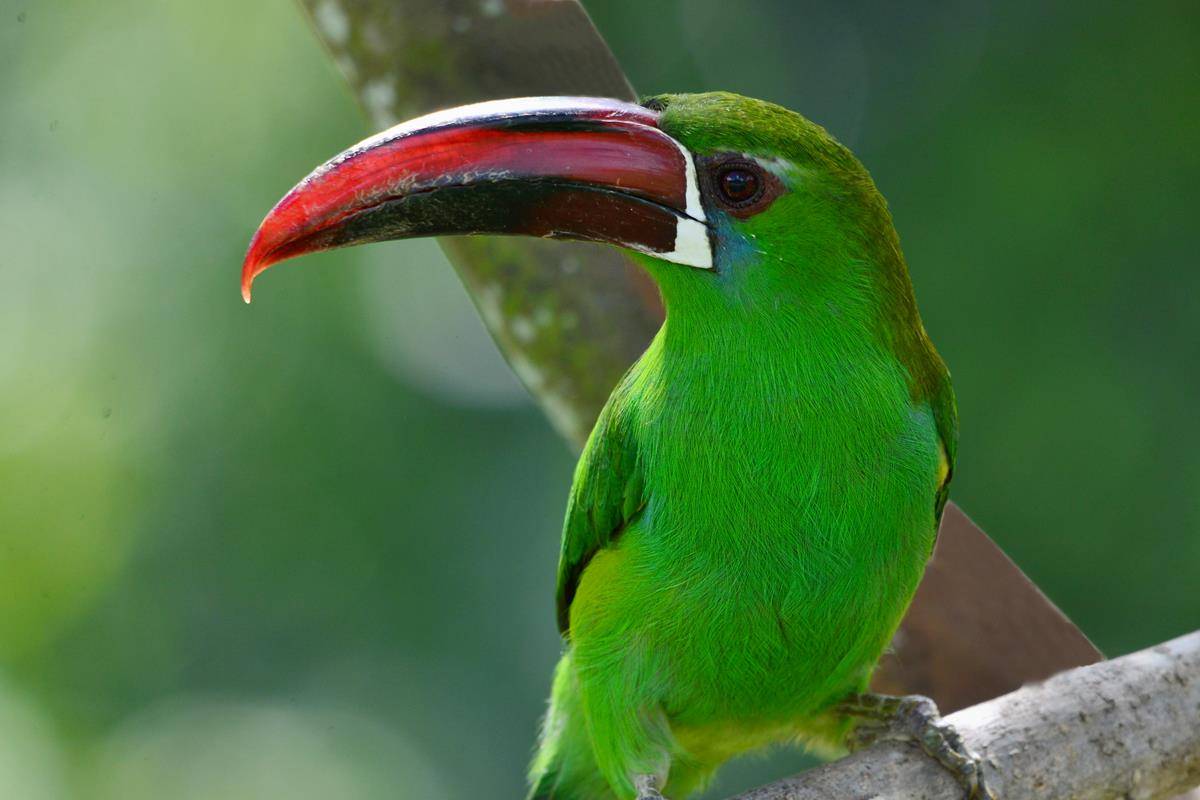
Photo Courtesy of Alejandro Bayer / CC BY-SA 2.0During the breeding season, Crimson-rumped toucanets use the cavities of trees that have been made by other birds. If there are none, they will use the natural ones. The female lays up to four eggs within, and both she and the male incubate them for 15 days. The chicks are born naked, blind, and deaf, and both parents will feed them until they are six weeks old and can fend for themselves.
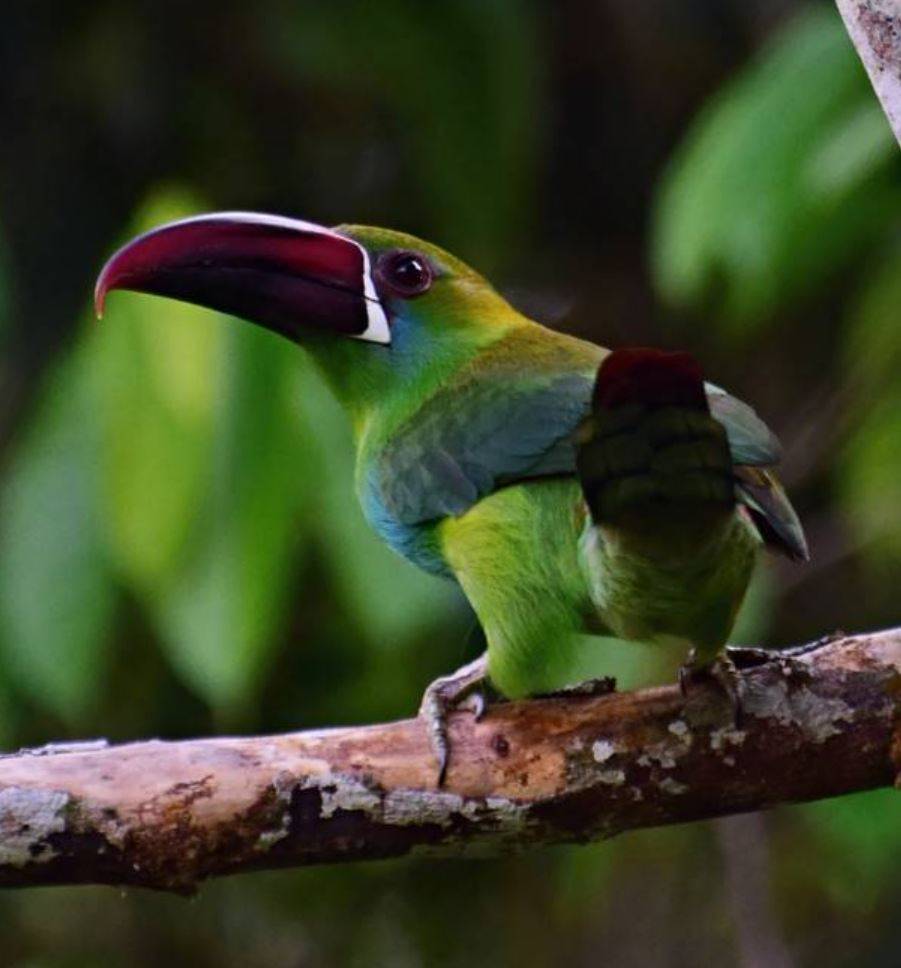
Photo (cropped) Courtesy of Alejandro Bayer / CC BY-SA 2.0These birds are regarded as of Least Concern on the IUCN Red List.
